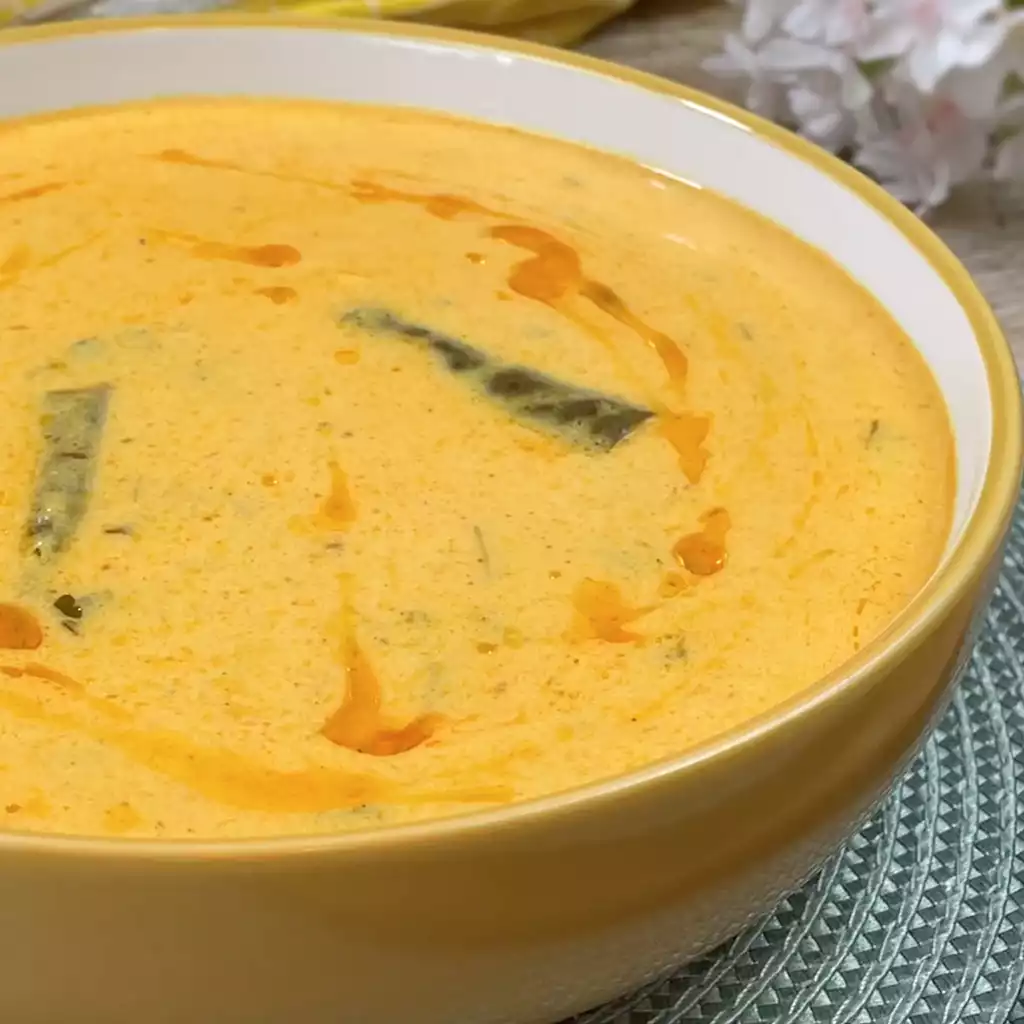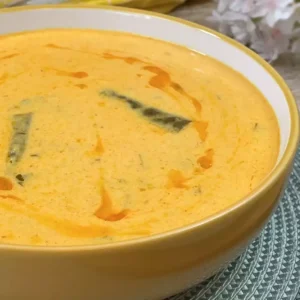
Dahi Ki Kadai, a delightful dish straight from the heart of Indian cuisine, embodies the essence of comfort and flavor.
Originating from the northern regions of India, this recipe is a celebration of creamy yogurt and aromatic spices coming together in perfect harmony.
Despite its seemingly intricate name, Dahi Ki Kadai is surprisingly easy to master, making it an ideal choice for both seasoned cooks and beginners alike.
Expert Tip: For a richer flavor, you can add a dollop of fresh cream to the curry before serving.
Yoghurt: Yoghurt brings a creamy texture and a tangy flavor that forms the foundation of the curry. Its mild acidity adds a pleasant contrast to the spices, creating a balanced and flavorful dish.
Gram Flour: Also known as besan, gram flour acts as a thickening agent in the yogurt mixture, enhancing its consistency and providing a velvety smoothness to the curry.
Oil: Used for sautéing the garlic paste and spices, oil adds richness to the dish and helps to release the flavors of the aromatic ingredients.
Garlic Paste: Infusing the curry with its pungent aroma and bold flavor, garlic paste brings depth and character to the dish, elevating its overall taste profile.
Green Chillies: Adding a subtle heat and a fresh, vibrant flavor, green chillies contribute to the dish’s complexity without overpowering the palate.
Turmeric Powder: Known for its vibrant color and earthy flavor, turmeric powder not only lends a beautiful golden hue to the curry but also offers numerous health benefits.
Salt: Essential for enhancing the flavors of the other ingredients, salt balances the dish and brings out its natural savory notes.
Chilli Powder: Adding a gentle kick of heat, chilli powder enriches the curry with its bold, spicy flavor, tantalizing the taste buds and adding depth to every bite.
Coriander: Used as a garnish, fresh coriander adds a burst of freshness and a pop of color to the dish, complementing its rich and creamy texture with its citrusy notes.
Expert Tip: Keep the heat on medium-low while adding the yogurt mixture to prevent curdling.
Expert Tip: Ensure that the yogurt mixture is well whisked to eliminate any lumps before adding it to the curry.
Dahi Ki Kadai typically takes around 30-40 minutes to prepare, including both preparation and cooking time.
While Greek yogurt can be used as a substitute, keep in mind that it has a thicker consistency, so you may need to adjust the amount of water accordingly to achieve the desired texture
The level of spiciness can be adjusted according to personal preference by varying the amount of green chillies and chilli powder used in the recipe.
Yes, Dahi Ki Kadai can be made ahead of time and reheated before serving. However, keep in mind that the texture may slightly change upon reheating, so it’s best enjoyed fresh if possible.
Yes, Dahi Ki Kadai is a vegetarian dish, making it suitable for vegetarians and those looking for meatless meal options.
Here are some more recipes for you to enjoy! If you my recipes don’t forget to rate and leave a comment.
If you have any recipe suggestions, please do not hesitate to ask me. A great way to stay in contact with me is through Instagram, Facebook, Twitter and YouTube. Don’t forget to tag me @CookwithNabeela in your recipe photos!

Subscribe now to receive my latest recipes directly in your inbox. Stay up-to-date and never miss out!

I love to cook! I want to share with you my favourite, delicious family-friendly recipes. I want to inspire you to create fantastic food for your family every day.
Add your first comment to this post